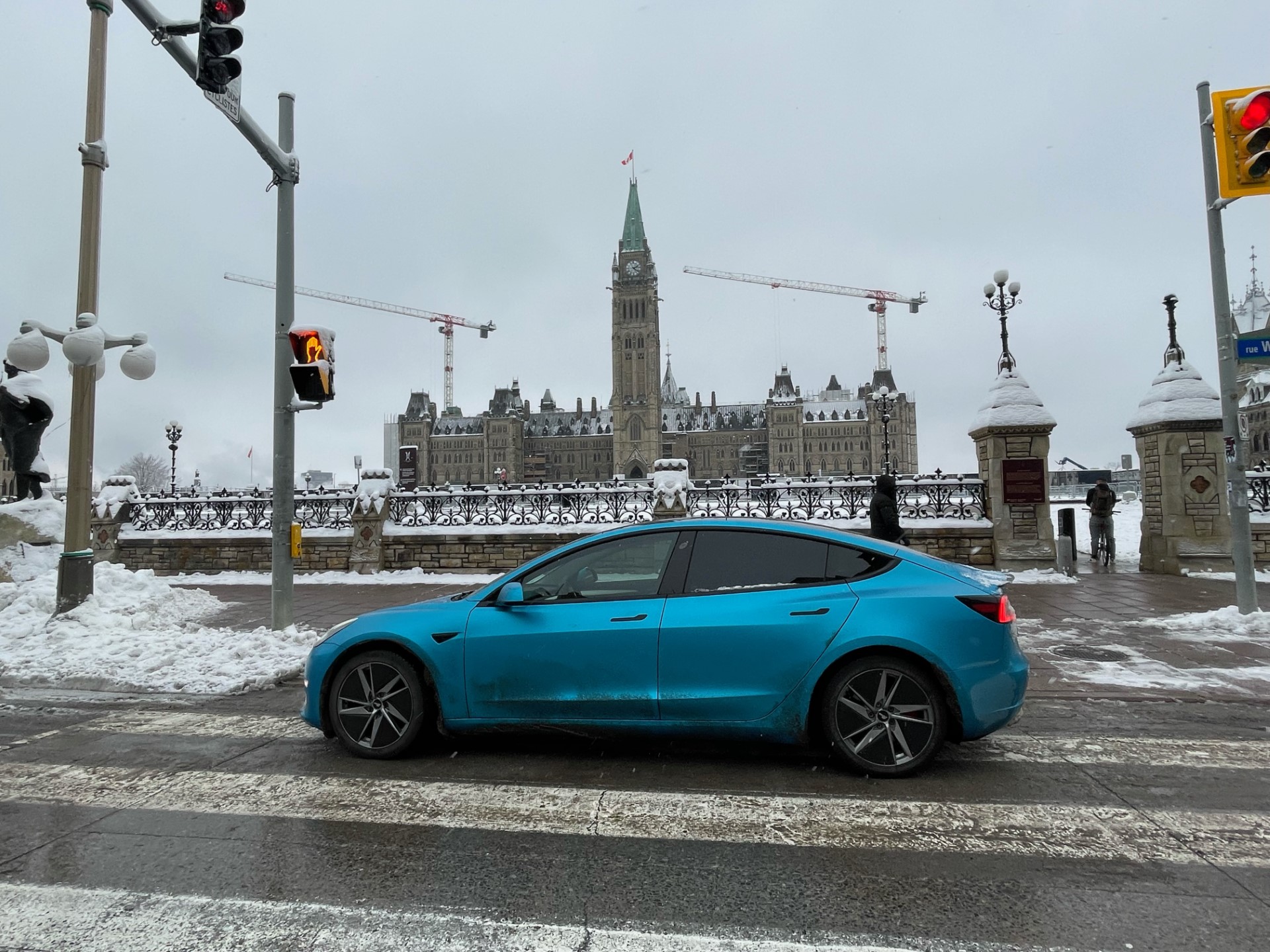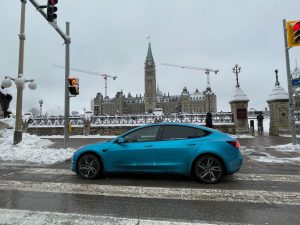Getting the facts straight on ZEV sales regulation
December 6, 2023
By Daniel Breton, President and CEO, Electric Mobility Canada I was left bewildered after reading Mr. Leonard Waverman’s op-ed in the Globe & Mail on […]

By Daniel Breton, President and CEO, Electric Mobility Canada
I was left bewildered after reading Mr. Leonard Waverman’s op-ed in the Globe & Mail on Zero Emission Vehicle (ZEV) sales regulation published on November 26, 2023.
I would like to correct several erroneous statements made in his piece:
1. The federal government has not unveiled its official ZEV regulation, so has not yet mandated anything.
2. Mr. Waverman implied that ZEV sales were nowhere near where they needed to be to reach 20% by 2026 and that “the number of electric vehicle sales has stalled both here and in the United States”. That’s false. Actually, ZEV sales are currently hitting new records in Canada and the US. According to S&P Global, Canadian ZEV sales grew from:
-From 3.7% in Q3 2020 to 5.6% in Q3 2021 (+50% year over year)
-From 5.6% in Q3 2021 to 8% in Q3 2022 (+43% year over year)
-From 8% in Q3 2022 to 13,3% in Q3 2023 (+65% year over year)
3. If ZEV sales were to increase by only 23% year over year, we would easily reach our 2026 ZEV sales target. Thanks to ZEV rebates and regulation, Quebec and B.C. are both surpassing their targets.
4. ZEVs do not “satiate an abstract desire on the part of the environmentally conscious consumer”. It’s a cold hard fact that they emit less GHG emissions and air pollution. This is anything but abstract. Considering that 2023 was a record year for forest fires in Canada, it would seem obvious that we need to act now and do everything in our power to lower our GHG emissions and air pollution; transitioning from gas to electric vehicles is one of the key actions we can make the enact this change.
5. Auto Trader Canada reports that the average selling price for a new light duty vehicle in Canada in September 2023 was $67,800. Canadians now have access to more than 40 different ZEV models below that price when including the federal rebate. A growing number of ZEVs are priced competitively, even without accounting for provincial rebates, energy and maintenance savings.
6. According to Transport Canada, there are currently more than 25,000 public chargers across Canada. In fact, Canada has already surpassed its DCFC target two years in advance and is on its way to reach its 50,000 public charger goal for 2025, thanks to the ZEVIP program and a growing number of private companies dedicated to EV infrastructure deployment. More public infrastructure deployment will be necessary as the number of ZEVs increases, but we must always keep in mind that the backbone of ZEV charging is, and will always be, residential charging. More than 80% of charging occurs at home.
The North American charging standard situation has evolved quickly over the past year. GM, Ford, Honda, Hyundai, Acura, Kia, Nissan, Mercedes, BMW, Volvo, Polestar, Rivian, Toyota, Lexus and Lucid have all announced that they will be transitioning to the North American Charging Standard, leaving mainly Stellantis (who doesn’t yet offer a single BEV in Canada) and the VW group who has its own charging network.
7. Starting with the Toyota Prius in 1997, partial and full EV batteries have been a part of commercially available cars. I remember that people said the exact same thing about battery replacement when it was launched and there has been no issue since. In addition, a new generation of qualified EV specialists can now repair EV batteries instead of replacing them.
8. The electricity grid can indeed handle the uptake of EVs. EMC recently published a document to that effect.
9. Finally, just like taxes on cigarettes, gas taxes should not serve as a reason to keep gas cars on the road. The economic impact of air pollution has been estimated by Health Canada at $120 Billion and 15,300 deaths a year and its two main causes are: transport plus oil & gas. By transitioning to EVs, we will help save thousands of lives and billions of dollars that could, in turn, help pay for the roads.
The government’s decision to regulate ZEV sales stems from years of discussions and unsuccessful voluntary measures. The government had to assume responsibility and implement regulations. Without such measures, achieving any ZEV sales or GHG emission reduction targets would fail once again.
REFERENCES
- https://www.coxautoinc.com/market-insights/q3-2023-ev-sales/
- https://www.spglobal.com/mobility/en/research-analysis/automotive-insights-q3-2023-canadian-ev-information-and-analysis.html
- https://www.environnement.gouv.qc.ca/changementsclimatiques/vze/rapport-mise-oeuvre-2018-2020-en.pdf
- https://news.gov.bc.ca/releases/2023EMLI0043-001640#:~:text=The%20ZEV%20Act%20amendments%20will,ahead%20of%20the%20original%20target
- https://www.cbc.ca/radio/ideas/world-on-fire-canada-s-worst-wildfire-season-on-record-1.6946472
- https://editorials.autotrader.ca/media/olznqnfo/2023-q3.pdf?_gl=1*ucz7v7*_gcl_au*MjAyNzgxNDU4Ny4xNjk3NDY5NjIz*_ga*Mjk5MjU2OTE0LjE2OTc0Njk2MjM.*_ga_PCMZZ2EWK8*MTY5NzU1Nzc0OS4zLjEuMTY5NzU1NzkzOC41NC4wLjA.&_ga=2.223563867.1173867674.1697557750-299256914.1697469623#:~:text=In%20September%202023%2C%20the%20average,year%2Dover%2Dyear%20increase
- https://tc.canada.ca/en/road-transportation/innovative-technologies/zero-emission-vehicles/light-duty-zero-emission-vehicles/eligible-vehicles?utm_campaign=tc-zev-hub-ongoing&utm_medium=doormat-link&utm_source=zev-hub-incentives-page-en&utm_content=vehicles-eligible-izev
- https://natural-resources.canada.ca/energy-efficiency/transportation-alternative-fuels/electric-charging-alternative-fuelling-stationslocator-map/20487#/analyze?country=CA&fuel=ELEC
- https://emc-mec.ca/wp-content/uploads/2023/11/EMC-Grid-Readiness-Statement-13-Nov-2023-EN-final.pdf
- https://www.canada.ca/content/dam/hc-sc/documents/services/publications/healthy-living/2021-health-effects-indoor-air-pollution/hia-report-eng.pdf
